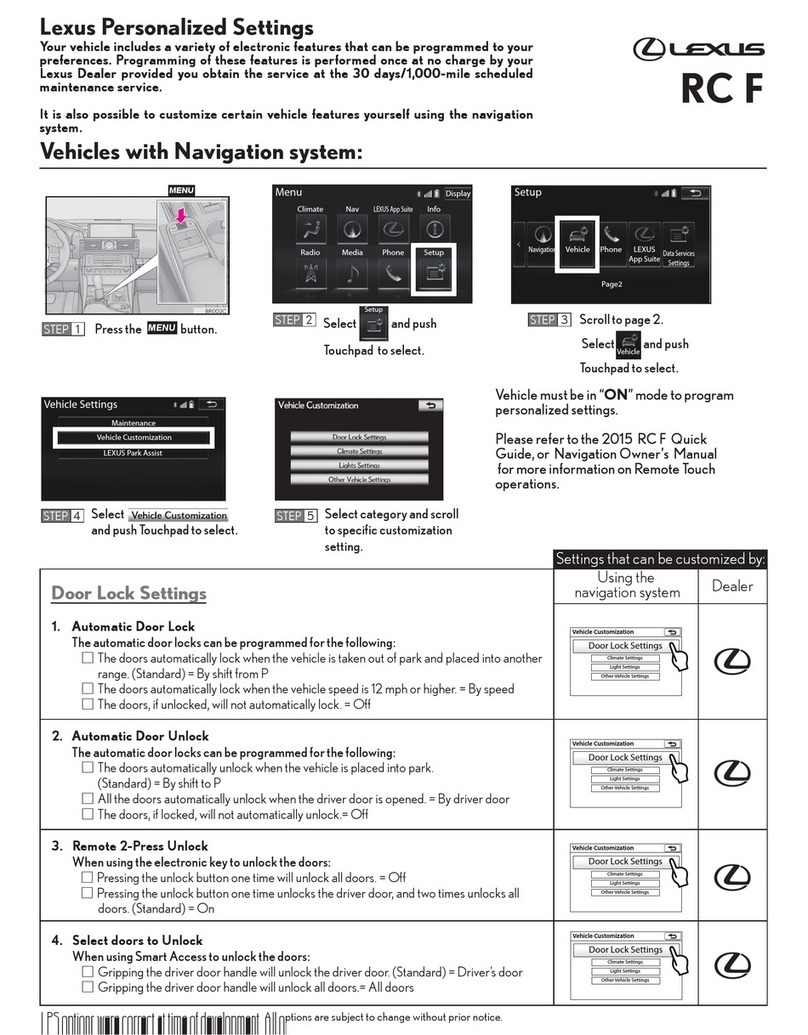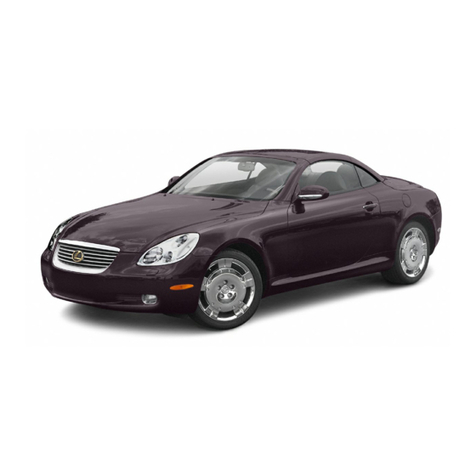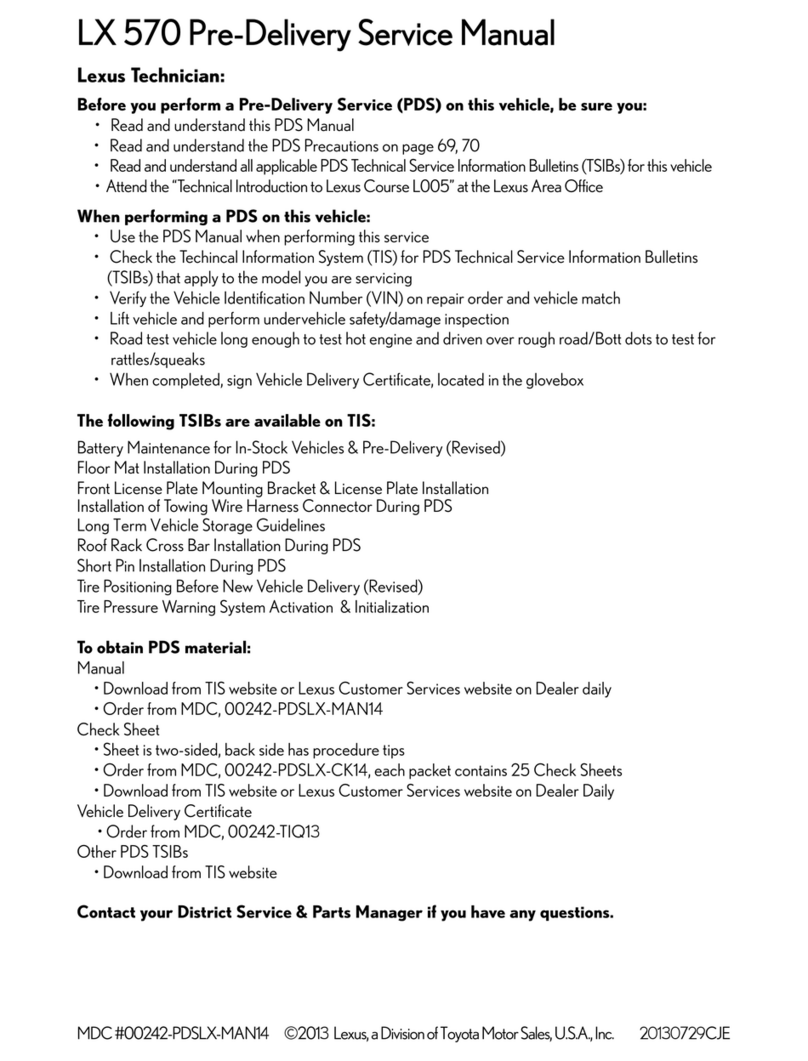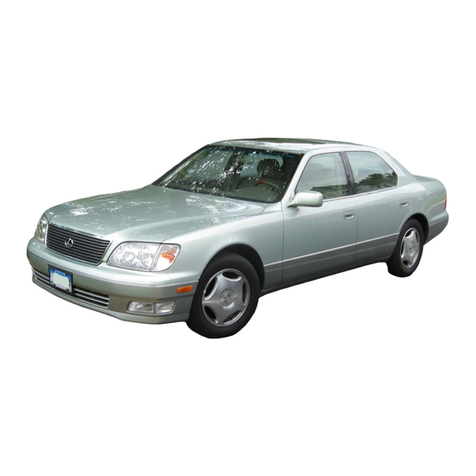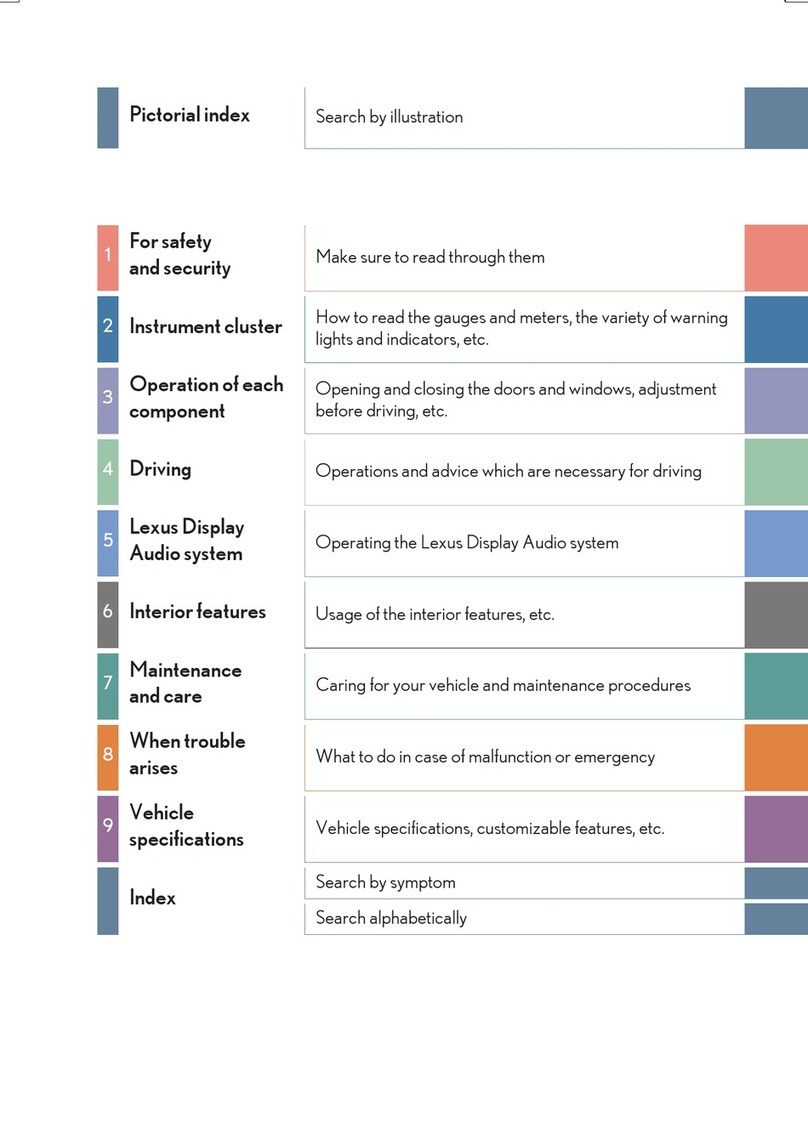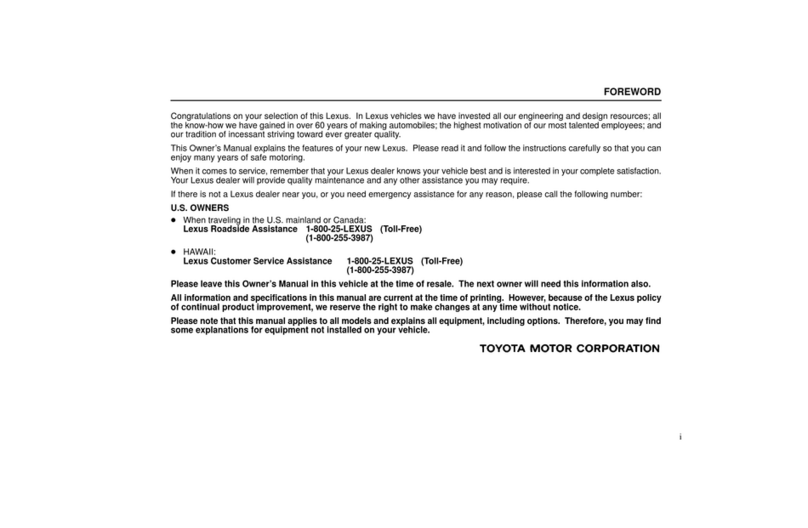
4
GENERAL TOWING INFORMATION
EQUIPMENT AVAILABILITY:
To eliminate the need to remove the eyebolt from the vehicle’s tool kit during loading or recovery, a
screw-in eyebolt is available from any authorized Lexus dealer’s parts department.
Towing Eyebolt Part number 5196148202
The towing and tie-down equipment discussed in this guide is available through AW Direct, a preferred
AAA supplier. Contact your local AAA club representative for special offers available to AAA
contractors.
SPECIAL PRECAUTIONS:
The ES300h has a locking steering column with Push-Button start
If the vehicle needs to be towed, do so with front wheels raised. If the wheels connected to the electric
motor (traction motor) are on the ground when towing, the motor may continue to generate electricity.
This may cause electricity leakage leading to a fire.
Wheel-lift and car carrier equipment are authorized methods of transporting this vehicle. A car carrier is
the preferred method of transporting. THERE IS NO APPROVED PROCEDURE FOR THE USE OF
SLING-TYPE EQUIPMENT ON THIS VEHICLE.
When loading or pulling the ES300h, DO NOT USE HOOKS OF ANY TYPE ON THE LOWER
CONTROL ARMS. Follow only the approved loading procedures specified in the following pages and
listed in the AAA/CAA Towing & Service Manual.
In an emergency situation where the vehicle will not roll or must be moved for towing access, wheel-
jacking equipment, such as GoJaks are recommended.
Shifting out of Park and into Neutral:
The vehicle may be shifted out of Park into Neutral by pressing the POWER button to attain either Ignition-on
or READY-on modes. To select Neutral, press the brake pedal while moving the shifter from Park
If the 12-Volt auxiliary battery is discharged, the vehicle will not start. However, shifting out of Park is possible
using the manual override procedure listed on page 13 of this guide.


